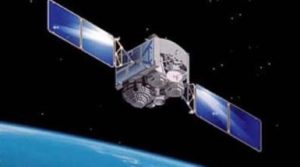
China has announced the completion of its BeiDou global navigation satellite system (GNSS) and the start of worldwide service on 27 December 2018, marking a victory for Beijing’s “Made in China 2025” strategy that promotes strategically autonomous high technologies such as autonomous driving, satellite technology, Artificial Intelligence (AI), and 5G networks, among others.
The BeiDou Navigation Satellite System, or BDS, was originally expected to start worldwide coverage in 2020 but this has been brought forward. The globally-available BDS system means that China now joins the United States (Global Positioning System – GPS) and Russia (GLONASS) as a global provider of satellite-based positioning, navigation, and timing (PNT) services.
“This signifies that BDS has officially entered the global era as [it] expands from a regional system to a global navigation system,” Ran Chengqi, director general of the China Satellite Navigation Office, said.
“From now on, no matter where you go, BDS will always be with you,” he added.
With this sooner than expected launch, BDS becomes one of only four global navigation satellite systems, alongside America’s GPS, Russia’s GLONASS, and Europe’s Galileo.
Some critics in the United States are concerned that BDS will allow the Chinese military to deploy and use BeiDou-guided weapons that could target U.S. and allied strategic installations and forces, even if other GNSS systems such as GPS were denied to them.
“China is almost certainly equipping its ballistic and cruise missiles to operate with both GPS and Beidou,” said a report by the U.S.-China Economic and Security Review Committee. If this is the case then it means that the Chinese military “could switch to Beidou to guide a missile to its target if GPS were denied, and China would also be able to attack an adversary’s access to GPS without disrupting its own capabilities,” the report said.
As well as defence and national security uses, other applications for BDS are being developed for the Chinese economy and private sector. Modern satellite capabilities are critically important for the Made in China 2025 strategy, as Beijing has ambitions that technologies like BDS will become important for national and international economic security, creating a pattern of dependencies, and using BDS and technological developments in AI and 5G networks as the basis for creating international technical standards which in turn are key for establishing global dominance in high-technology sectors.
“BDS represents an independently developed Chinese technology,” Ran Chengqi said. The Nikkei Asian Review reports that China has shipped 70 million items of ancillary products such as BDS microchips primarily for use on ships and public transportation to 90 countries. Nikkei also reports that China leads the world for satellite navigation patent applications at 54,000.
Products from Chinese smartphone makers such as Huawei, Xiaomi, and Oppo, as well as Chinese automobile manufacturers, will be compatible with BDS. Huawei has been in the news recently amidst claims from Western intelligence services that its devices and components could be used as ‘backdoors’ that might allow Chinese intelligence services access to data and networks, and Western companies and governments have also criticised Huawei’s business practices as it attempts to become a global technological standard setter.
There are also challenges that prevent BDS being adopted anytime soon such as a lack of perceived reliability that can only be gained through operational use and experience. Nikkei Asian Review reports, for instance, that most Chinese services use the U.S. GPS system as a back-up.





